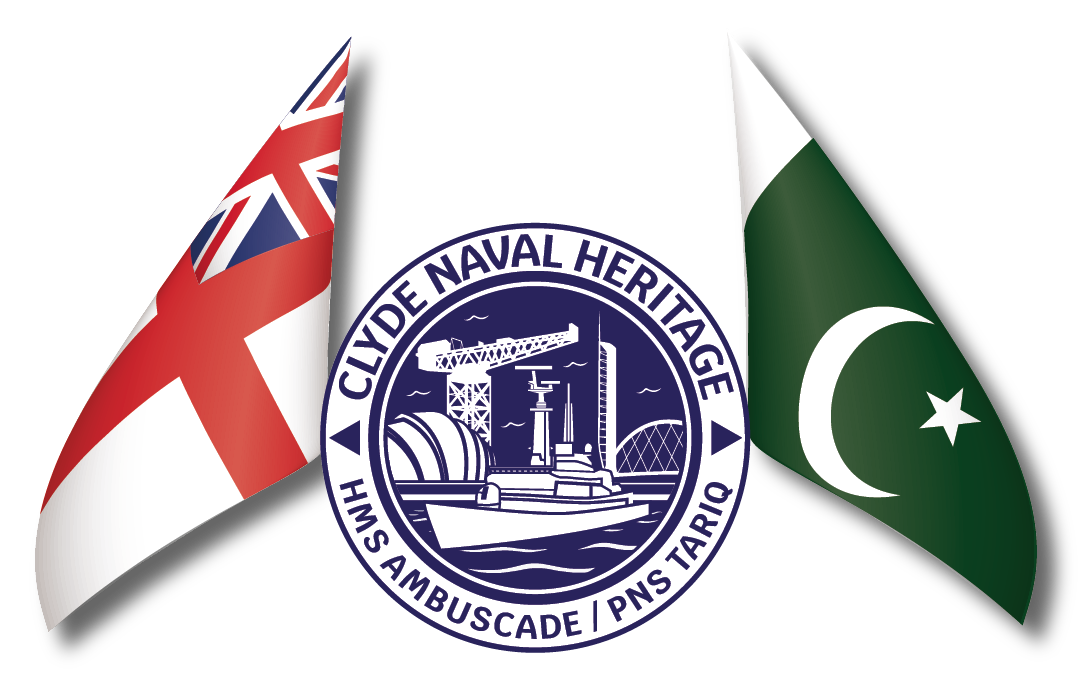The RMS Aquitania was one of the most significant ocean liners of the early 20th century, renowned for her longevity, luxurious interiors, and versatility in service. Built on the River Clyde in Scotland, she became a symbol of British maritime power, transcending her initial role as a luxury passenger liner to become a warship and hospital ship during two world wars.
Conception and Design (1909–1911)
Lusitania’s Influence: In the early 1900s, British shipping company Cunard Line sought to compete with Germany’s dominance in transatlantic travel. The successful launch of the Lusitania and Mauretania in 1907, both record-breaking ships for speed, showed that Cunard was leading the way in ocean liner technology. However, by 1909, the company realized it needed a third vessel to keep up with demand and maintain the British presence in the luxury liner market.

Vision for Luxury: Unlike the Lusitania and Mauretania, which were known for speed, Aquitania was designed to embody elegance, comfort, and grandeur. The ship’s luxurious appointments were intended to rival the White Star Line’s Olympic class ships, particularly the ill-fated RMS Titanic. Cunard wanted Aquitania to provide a more opulent and relaxed experience, one that would attract the wealthiest travellers.
William Beardmore’s Shipyard on the Clyde: Cunard awarded the construction contract to the Clyde-built shipyards of John Brown & Company in Clydebank, Scotland, one of the most prestigious shipyards in the world at the time. The ship’s keel was laid down in 1910, and her design was entrusted to Leonard Peskett, one of Cunard’s chief architects.
Construction and Launch (1911–1914)
Construction: Construction on Aquitania began in December 1910. Measuring 901 feet (274 meters) in length and weighing 45,647 tons, she was one of the largest liners ever constructed on the Clyde. The use of steel and advanced rivet techniques from Beardmore’s yard gave the ship exceptional strength, and its four-funnelled silhouette marked her as a prestigious and powerful ship of the era.
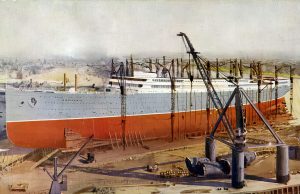
Design Features: Peskett’s design was characterized by classic Edwardian elegance with a distinctive profile, boasting four smokestacks, although the fourth was largely ornamental. The ship featured elaborate wood-panelled interiors, grand salons, a sweeping staircase, and a range of luxurious amenities, including a swimming pool, palm courts, and an orchestra for entertainment.
Launch Day (April 21, 1913): The Aquitania was launched on April 21, 1913, from the John Brown & Company shipyard in Clydebank. This event was attended by a large crowd, as the ship represented a marvel of modern engineering and a testament to the skills of Scottish shipbuilders. Her first sea trials took place in May 1914, and she exceeded expectations, reaching speeds of 24 knots.
Pre-World War I Service (1914)
Maiden Voyage: The RMS Aquitania embarked on her maiden voyage from Liverpool to New York on May 30, 1914. Her elegant interiors and comfort drew rave reviews, with her first-class cabins and lounges setting new standards in ocean travel. However, her commercial career would be cut short, as global tensions escalated into the First World War within just a few months of her launch.
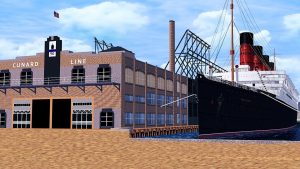
Service During World War I (1914–1918)
Transition to Warship: With the outbreak of World War I, Aquitania was requisitioned by the British Admiralty in August 1914 for military service. She was converted into an armed merchant cruiser, as her large size and speed made her suitable for troop transport and escort duties. Her role was vital in transporting British Expeditionary Forces to the battlefields of Europe.
Hospital Ship: From 1915, Aquitania was transformed into a hospital ship, ferrying thousands of wounded soldiers back to Britain from the front lines. She played a crucial role in the Gallipoli Campaign, helping evacuate the wounded from the disastrous Dardanelles campaign. During this time, her elegant passenger accommodations were stripped and refitted to handle casualties.
Troop Transport: In 1917, as the war intensified, Aquitania was redeployed as a troop transport, ferrying soldiers across the Atlantic. She made several voyages carrying American and Canadian forces to Europe, contributing to the war effort on the Western Front.
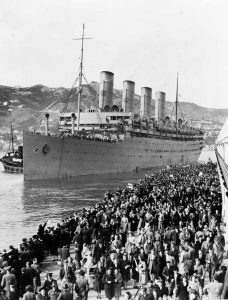
Interwar Years and Luxury Liner (1919–1939)
Return to Civilian Service (1919): After the war, Aquitania was refitted and returned to her role as a luxury liner in 1919. Her post-war refit restored many of the elegant features that had been stripped during wartime service. However, changes in the global economy, particularly after the Wall Street Crash of 1929, affected the transatlantic travel market.
Popularity During the 1920s and 1930s: Despite economic challenges, Aquitania enjoyed popularity during the Roaring Twenties. She became a favourite among the wealthy elite, earning the nickname “Ship Beautiful” for her ornate interiors and impeccable service. Her three-class system—First, Second, and Third—catered to a wide range of passengers, from the extremely wealthy to immigrants traveling to the United States.
Competition with Newer Liners: As the 1930s progressed, new and faster ships such as the RMS Queen Mary began to outshine Aquitania, though her reputation for comfort allowed her to remain competitive in the shrinking market for ocean travel during the Great Depression.
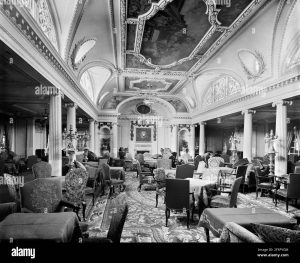
World War II Service (1939–1945)
Requisitioned Again: When World War II broke out in 1939, Aquitania was once again called into military service. She was used as a troopship, transporting soldiers across the globe. Her large capacity and relatively fast speed made her ideal for this role. Throughout the war, Aquitania travelled extensively, ferrying troops to North Africa, Australia, and other war zones.
Final Troop Transport Duty: By the end of the war in 1945, Aquitania had transported more than 300,000 troops and travelled over 500,000 miles in service. She was the only major liner to have served in both World War I and World War II, which was a testament to her durability and versatility.
Post-War Service and Retirement (1945–1950)
Return to Civilian Life: After the war, Aquitania returned to civilian service but was ageing, and the need for ocean liners had significantly diminished with the rise of air travel. She made a few final voyages, mostly carrying emigrants to Canada as part of post-war resettlement efforts.
Decommissioning: The wear and tear of decades of service, along with the advent of faster and more modern ships like Queen Mary and Queen Elizabeth, rendered Aquitania obsolete. She was retired from service in 1949, and in 1950, she was sold for scrap. In December of that year, she was broken up in Faslane, Scotland, ending a remarkable 36-year career.
Legacy
The RMS Aquitania holds a unique place in maritime history. She was the last of the four-funnelled ocean liners and one of the most versatile ships ever built, serving as a luxury liner, hospital ship, and troop transport. Her graceful lines and luxurious interiors made her a favourite among passengers, while her wartime service solidified her as a symbol of resilience. Built on the River Clyde, the Aquitania was a proud achievement of Scottish shipbuilding, and her legacy endures as one of the most storied ships of the 20th century.
